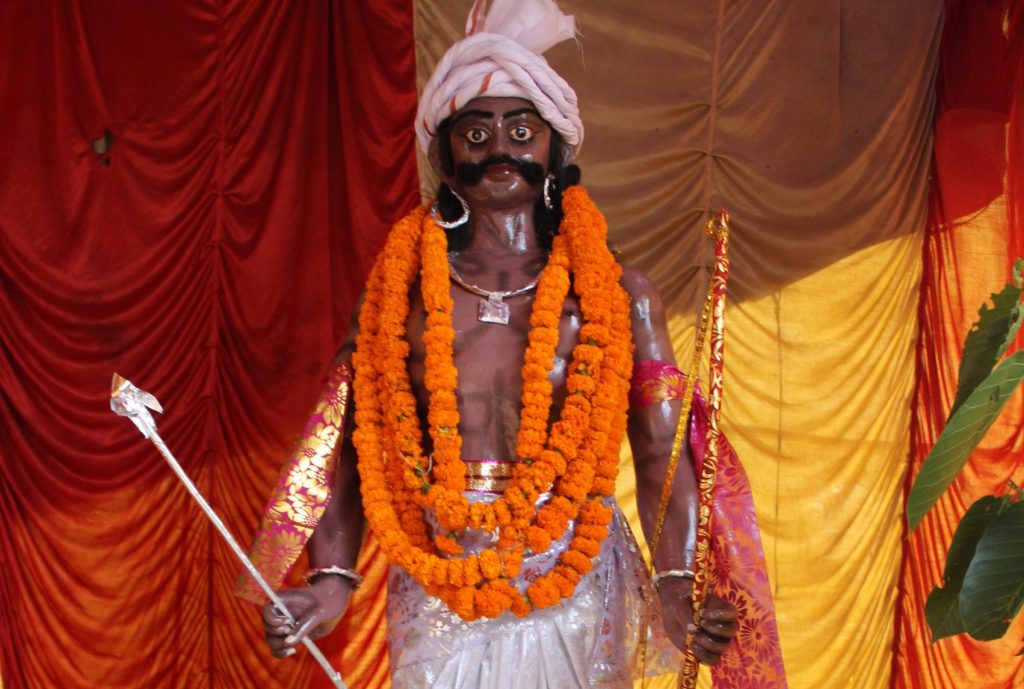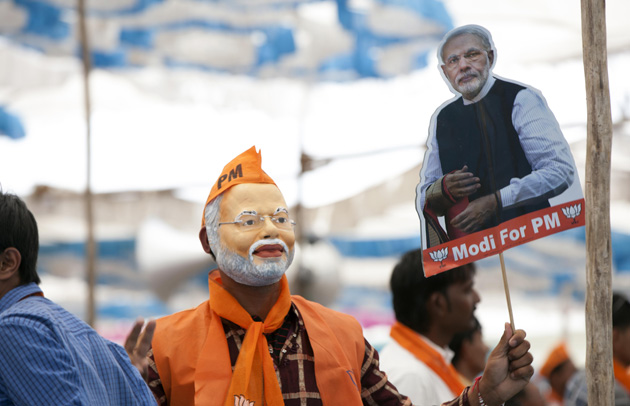
Necessary Demons: Mythopolitics of the Asur Movement
Moumita Sen
This is a study of how caste minority activists deconstruct, dismantle, and defame hegemonic Hindu mythological narratives through concerted grassroots level political action. The organic intellectuals leading the movement believe that the stories of deities and demons from Hindu Puranas (religious, narrative texts) was a mythic formulation of historical events—or itihasa (vernacular history) —told from the point of view of the Aryan victors who called themselves as devas [gods] and denigrated the vanquished non-Aryan indigenous peoples as asurs[demons]. The movement coalesced under the banner of the ‘demon’, Mahishasur as a champion of minority rights, and was focused on defaming Durga as a “honey trap” and a “prostitute” sent by the Aryan gods to defeat the ‘great non-Aryan king’. While in 2011 they had started with the Durga-Mahishasur myth, by 2019 they had extended this act of deconstructive reinterpretation to many other Hindu deities. These caste minority rights activists argue that the Hindu nationalist party is not simply a political force; it is a cultural force. Therefore, creating an opposition in electoral politics is not enough to counter this force; they need counter-culture. It is important to deBrahminize—a term used to understand a process akin to decolonizing that aims to weaken the hold of Brahminical (priestly caste) ideology—the minds of lay Hindus.

The Mythopolitics of ancient and medieval Sanskrit myths
Silje L. Einarsen
This sub-project adresses Mythopolitics in South Asia through a study of ancient and medieval Sanskrit myths used in contemporary political discourse in India. The project analyzes the role and function of Hindu myths in contemporary politics through a critical study of the Sanskrit sources in an interdisciplinary context, i.e. in combination with literary theory, digital methodologies and discourse analysis. By focusing the textual analysis on contested and controversial myths relevant to the contemporary political debate, the project will also shed light on parts of the Sanskrit myth corpus that are usually overlooked by Indologists and historians of religion, and thereby broaden our understanding of the Hindu mythworld as handed down to the present through these texts. The main objectives of this project is to (1) generate new perspectives on ancient texts and their alternative readings by studying Sanskrit myths in relation to their contemporary political counterparts, and (2) to generate new knowledge of how these myths are expressed, constructed, negotiated and deconstructed in the contemporary struggle for national myths of identity and belonging. On an overarching level, the project is interested in the role of Sanskrit as a national myth and political tool.

Modi magic: Myth and myth-making in contemporary populist leadership
Guro W. Samuelsen
The project investigates the contemporary resurgence of Mythopolitics in South Asia through an interdisciplinary study of the political mythology of the contemporary Hindu nationalist movement and of India’s Prime Minister Narendra Modi. The Hindu nationalist movement has a long tradition of reshaping Hindu mythological narratives for the purpose of political mobilization. Today, the popular mandate of the movement and the permeation of hindutva into ever new spheres of social life is buttressed by an intensive labour of political myth building. This is also reflected in the production of ‘Modi Magic’. Here, mythic material, symbols, and narrative forms located in mythological time are utilized in the creation of new, authoritative political myths that enable Modi to embody the nation and its aspirations, and to project these into the future. The project uses methods from visual anthropology, discourse analysis, and ethnographic field work to analyse popular hagiographies depicting Modi’s life, his political speeches and performances in times of crisis, and the reception, consumption and usage of mythological narratives by political activists and lay Hindus in a North Indian town. The main objectives of the project are to generate new knowledge on the production of meaning embedded in contemporary political myths, and to analyse the implications of the hindutva Mythopolitics for the political and social order.

The Mythopolitics of New Religious Movement among Karbis
The’ang Teron
This project entails investigating the construction of a new religious identity, assimilation politics, and the power dynamics under the majoritarian party ideals. The project examines grassroots negotiation politics, adaptive strategies, homogenization, and representation reflected in the asymmetrical mainstream and margins relationship. Karbi (one of the significant indigenous populations in Assam, Northeast India) cultural conventions, practices, and expressions are embedded in the folk songs, rituals, and folk narratives transmitted orally for generations. Language plays an essential role, and narratives (story world(s), e.g., the usage of myths) shape the everyday Karbi world. Syncretism and cross-cultural negotiations are critical features of the local, regional politics in Assam. Lokhimon is a local variant of the vaishnavite movement that garnered momentum in the 60s in the Karbi Anglong district, Assam, contrasting the old traditional Karbireligion. The group is founded on the teachings, ideals, and beliefs of the then supreme leader Lokhon Ingti Hensek (the ultimate embodiment of all Hindu gods/goddesses and amalgamation of all Karbi deities and the incarnation of Vishnu). The Lokhimon followers revere Lokhon IngtiHensek (aka Lokhimon) as the savior of the Karbi people and forfeit old Karbi traditional practices as irrelevant and outdated. This project broadens our understanding of myth making politics in the North Eastern region of India by analysing the effects of this new religious movement in traditional Karbi lifeworlds.
